- Home
- Build A Fire
- Top Down Fire
Top Down Fire
This post may contain affiliate links so I earn a commission.
A top down fire, or feeding fire, is a fire building technique that's much different from building a conventional fire.
Typically, when building a fire, you start out with a handful of crumpled-up newspapers and place them under small pieces of kindling.
Then, you add larger pieces of wood on top of the kindling, followed by even larger pieces of wood.
While this method works pretty well, there's a better and even more efficient way to build a fire.
The problem with the "conventional way" of building a fire is the amount of time it takes before the fire takes off.
During this slow, smoldering process, smoke and unburnt gases enter your cold chimney, where they can potentially adhere to the chimney walls causing creosote.
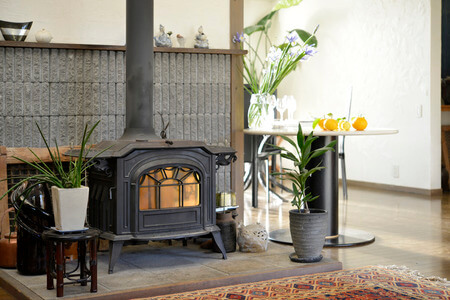
To create a hot burning fire right from the beginning, you have to think outside the box and create a fire built-in reverse!
The process of building a top down fire is just as it sounds.
You start your fire by placing large pieces of wood on the bottom and then place the kindling on top.
It is generally the reverse of what most people do when starting a fire.
You simply light it at the top, and the fire will gradually burn down to all the underneath layers.
It might seem complicated in your initial attempts, but you can get amazing results with a top down fire with practice.
Make sure to use seasoned firewood for a cleaner and easier fire.
Building A Self Feeding Fire
Although the top down fire seems completely backward at first, it will soon become your favorite choice once you try it.
It works great in fireplaces, wood stoves, and even campfires.
The setup process takes a little longer than the conventional fire, but it will burn longer without constantly adding more logs to it.
You can pretty much light the fire and just let it burn.
The fire will also burn hotter and cleaner right from the start.
When you try this method, watch how much smoke the fire produces.
You'll be surprised how little smoke you see and just how clean this fire burns.
The most important part of this whole process is to use dry, seasoned firewood.
The fire works by having the coals and embers from the top layer fall into the wood layer below it.
If the wood is wet, it won't catch on fire, and you'll become frustrated.
Start by placing a row of large logs along the bottom of your fireplace, wood stove, or fire pit.
These will be the largest logs you use.
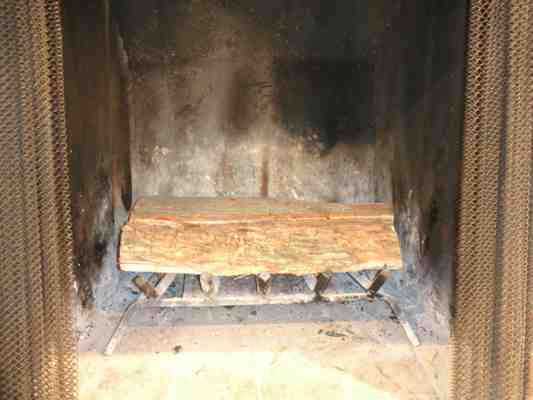
Next, place another row of slightly smaller logs criss crossing in the other direction.
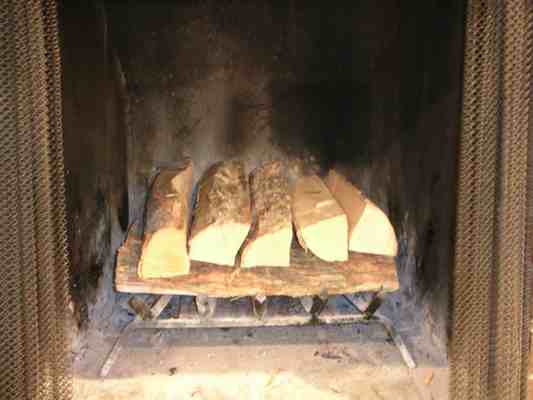
Follow this by placing a third row of even smaller wood.
This row should consist of kindling which is about and inch wide.
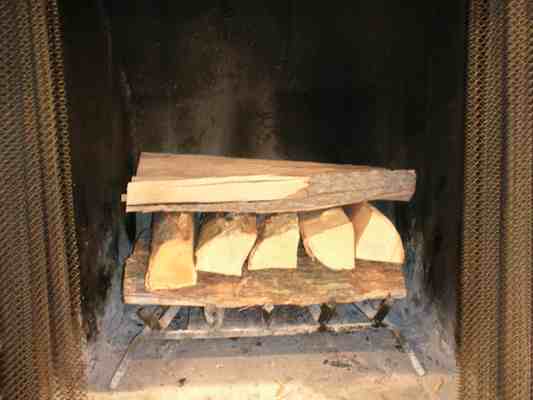
Finally, place a few pieces of newspaper on top and some small kindling that will easily light.
You can choose to use fatwood but I like to use small pieces of cedar kindling that lights easily and creates a hot flame.
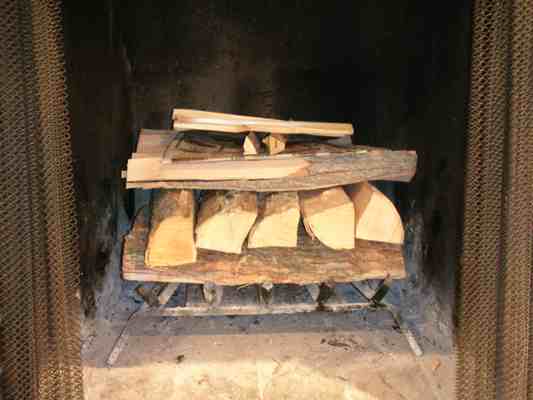
To light the fire, simply light the paper which in turn will ignite the small pieces of cedar kindling.
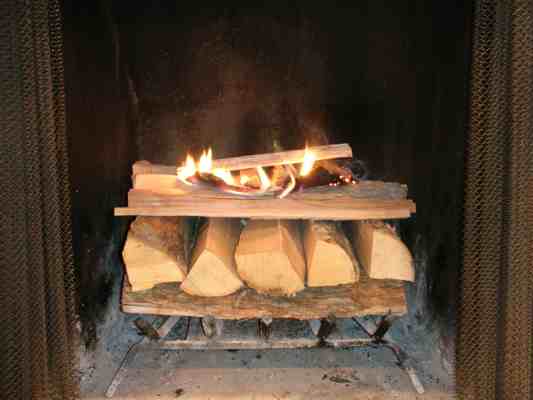
After just a few minutes your fire should look like this.
Notice how it's burning very clean and hot?
Theres no smoldering and the fire is not being smothered by any larger logs on top.
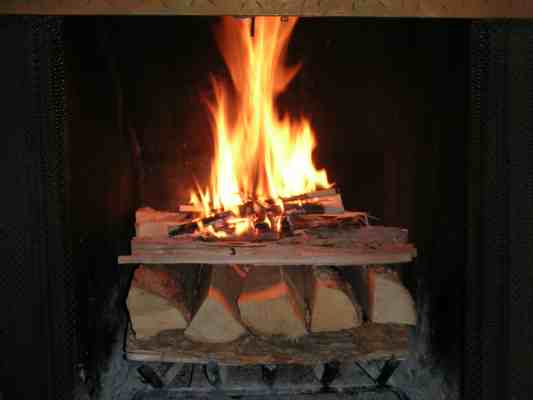
This picture shows how the fire has burnt through the top layers and it's starting to ignite the layers below.
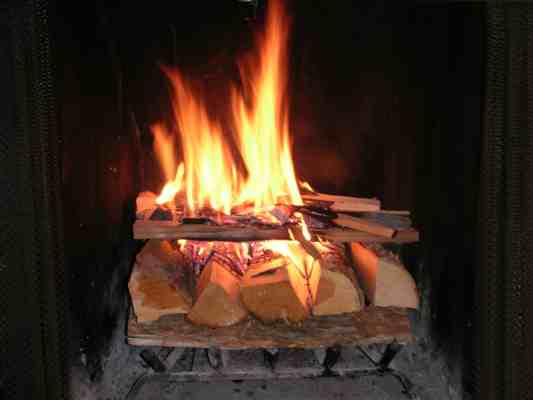
Although the pieces of firewood we used for this fire were fairly small (due to a small fireplace) the fire burned for almost 2 hours before we needed to add any additional firewood.
Why Should You Build A Top Down Fire?
There are various benefits to building top down fires. Some of the advantages include:
They Are Easy to Start
Have you ever been excited to start a fire, only for it to be dead a few minutes later?
With a top down fire, you need not worry about that.
Once the kindling placed on top catches fire, it burns slowly, settling down on the huge logs below it.
Therefore, if you are looking for a fire design that can start successfully, this is your perfect choice.
They Are Not Likely to Collapse Into Themselves
Generally, if you use the traditional or typical methods to start a fire, you'll have to start with putting the smaller logs at the bottom.
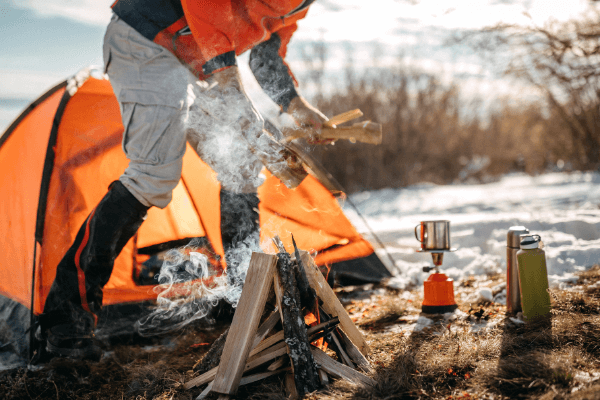
Once the smaller logs and kindling catch fire, they burn, leaving the
larger logs to collapse into them.
That can potentially put out the fire or lead to fire sparks, which can be dangerous.
They Last Longer
Unlike the teepee fire, the top down fire can last longer.
As long as you pile up large and many huge pieces of wood at the bottom, you may not need to add any more logs, at least for a few hours.
You can use it even for three to four hours without having to add any logs.
It is therefore good for long campsites.
They Emit Less Smoke
One of the significant concerns when lighting a fire is usually the smoke emitted.
You need a fire that produces less smoke to avoid making you suffocate in the house.
The flue in your wood stove or fireplace is solely responsible for pulling smoke out of your house and into the chimney.
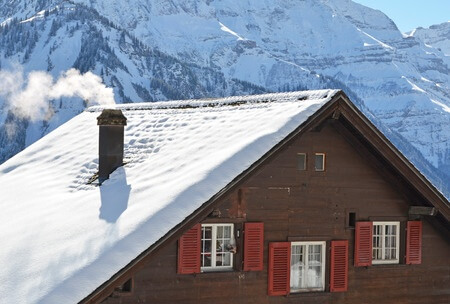
With the top down fire, the hottest flames are at the top, where the flue is located.
As a result, the flue gets hot very fast, pulling much of the smoke from the house to the chimney.
Therefore, less smoke is accumulated in the house.
One of the disadvantages is that it can take some time before the fire starts burning.
That is because it takes time for the fire to move from the top into the larger logs.
It might take almost 10 minutes before it burns intensely.
If you are looking to start a fire fast, this is probably not the best method to use.
Overall
With a bit of practice, building a top down fire is easy, and they burn great.
They're clean-burning, supply a lot of heat, and don't require any maintenance after lighting.
Also, they do not produce a lot of ash, and therefore, you do not have to spend time disposing of the ash.
A top down fire may not seem like the obvious choice when starting a fire.
However, it is definitely one of the best methods to use, especially during the cold seasons.

About the Author
Obsessed with firewood, Nick is behind over 350+ of Firewood For Life's articles, as well as countless reviews, guides and YouTube videos to help readers like you reduce heating costs and create the perfect fire.


